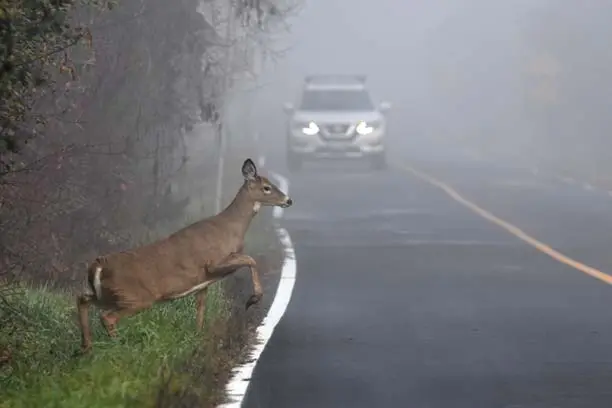How to Avoid Animal Collisions: 5 Safe Driving Tips


Every fall, the number of wildlife-vehicle collisions typically peaks as animals start migrating to winter habitat, mating season begins for deer and elk, and bears spend more time foraging before hibernation. Each year in the U.S., there are approximately 1 to 2 million crashes involving animals, accounting for an estimated 26,000 injuries to people and 200 human fatalities.
Animals are more likely to be found near wooded, wetland or agricultural areas, and wherever roads cross streams. Here’s how to keep yourself and any neighboring critters safe when you hit the road.
Animal crossing signs are there for a reason — they typically indicate known wildlife movement areas and wildlife-vehicle collision hot spots. Take notice of crossing signs along your regularly traveled routes and be sure to drive with increased awareness in those areas, no matter how many times you’ve made the trip.
The more time you have to react, the better your chances are for avoiding a collision with a crossing animal. The best defense to avoid a crash is to keep your speed down and increase the distance between you and other cars when possible. At night, take caution not to overdrive your headlights. Anything over 45 mph and your headlamps might not sufficiently illuminate objects at the end of the beam enough for you to evade it.
Animals move across the landscape for a wide variety of reasons and at different times of the year, such as mating and hunting seasons. Having a general understanding of those seasons can help you know when a collision might be more likely. Keep in mind that many wildlife species travel in large groups or herds, so where you see one, many more may be nearby.
Your car is not a natural predator. Even if an animal sees you, it may still jump in front of your car. The same holds true for animals who have already crossed safely — it may turn and try to cross back, so proceed with caution.
If you see wildlife on the road, remain calm and bring your car to a controlled stop. Do not swerve and leave your lane to avoid an animal. Many car accidents occur when drivers swerve to miss an animal and collide with cars in oncoming lanes or fixed objects such as trees on the roadside. If your car hit the animal, call the police and connect with a Farm Bureau agent to report the accident.
If you get in an accident or experience other car trouble, our Emergency Roadside Assistance can get you back on the road quickly. Add Emergency Roadside Assistance to your Farm Bureau Member’s Choice coverage and enjoy the peace of mind knowing you have help when you need it.